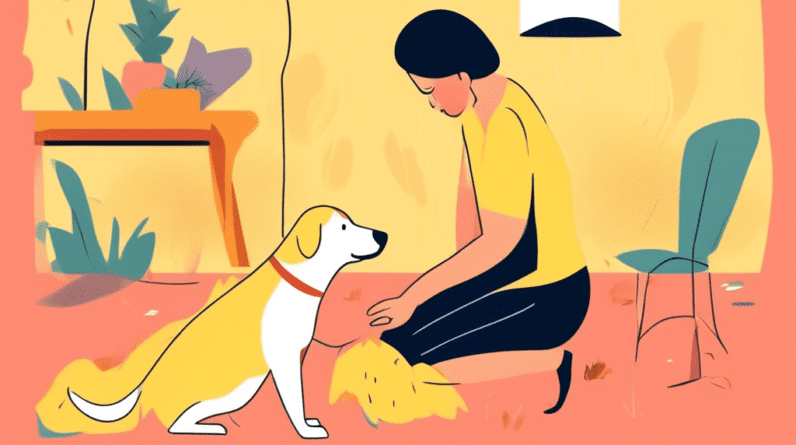
How Much Attention Does a Labrador Need?
Labrador Retrievers, with their playful personalities and boundless energy, are one of the most popular dog breeds worldwide. But those adorable puppy-dog eyes and wagging tails come with a commitment. If you’re considering welcoming a Labrador into your life, understanding their attention needs is crucial for a happy and well-adjusted furry family member.
Why Attention Matters: More Than Just Cuddles
While Labradors love a good cuddle session, attention encompasses much more than physical affection. It’s about fulfilling their innate needs as social animals and preventing potential behavioral issues that stem from boredom or frustration. Here’s why attention is vital for your Labrador’s well-being:
1. Combating Boredom and Destructive Behaviors:
Labradors are an intelligent breed, bred for active work. A bored Labrador is a recipe for mischief. Lack of mental and physical stimulation can lead to destructive behaviors like chewing, digging, excessive barking, or even escaping your yard.
2. Strengthening Your Bond:
Spending quality time with your Labrador deepens the bond between you. It builds trust, strengthens your communication, and makes training a more positive experience.
3. Meeting Their Social Needs:
Labradors are pack animals by nature. Whether it’s playing fetch in the park or simply lounging on the couch next to you, they thrive on companionship and interaction.
4. Promoting Physical and Mental Health:
Regular attention often translates into more opportunities for exercise and play, essential for keeping your Labrador physically fit and mentally sharp. A stimulated Labrador is a happy and healthy Labrador.
Decoding Your Labrador’s Attention Needs
The amount of attention a Labrador needs varies depending on several factors:
1. Age is More Than Just a Number:
-
Puppies (Up to 1 Year):
Puppies are bundles of energy! They require frequent potty breaks, short training sessions throughout the day, and plenty of playtime for socialization and exploration. Think of it as laying the foundation for good behavior in adulthood.
-
Adults (1 – 7 Years):
Adult Labradors still need a good amount of attention, but their needs may be a bit more structured. Aim for at least one to two hours of dedicated activity per day, which can include walks, playtime, training, or interactive games.
-
Seniors (7+ Years):
While senior Labradors may slow down a bit, they still crave interaction. Adjust the intensity and duration of exercise to match their abilities, but don’t skimp on the cuddles, gentle play, and mental enrichment.
2. Energy Levels: Every Labrador is Different:
Just like people, some Labradors are naturally more energetic than others. Observe your dog’s cues. Are they bouncing off the walls after a short walk, or are they content to cuddle after a game of fetch? Tailor your attention to their individual energy levels.
3. Lifestyle: A Day in the Life:
If you lead an active lifestyle and can involve your Labrador in your adventures, their attention needs might be met differently than a dog who spends most of their day at home alone. A lack of activity during the week may need to be compensated for with more attention on the weekends.
Meeting Your Labrador’s Needs: A Practical Guide
1. Daily Exercise: The Foundation of a Happy Labrador:
Aim for a minimum of one hour of dedicated exercise daily, but more is always better. This can include:
- Brisk walks or jogs
- Playing fetch or frisbee
- Swimming (Labradors generally love water!)
- Dog park visits for socialization (with supervision)
- Agility training or scent work
2. Mental Enrichment: Keep Those Brains Busy:
Mental exercise is just as important as physical activity for preventing boredom. Engage your Labrador with:
- Puzzle toys that dispense treats
- Interactive games like hide-and-seek
- Obedience training sessions (keep them short and fun!)
- Teaching new tricks
- Food puzzles or snuffle mats
3. Quality Time: Make It Count:
Don’t underestimate the power of simply spending quality time with your Labrador. This could include:
- Cuddling on the couch while watching TV
- Brushing their coat
- Talking to them and giving them plenty of praise
- Taking them for car rides
- Involving them in family activities
4. Recognizing Signs of Boredom: Don’t Ignore the Cues:
Be aware of these common signs of boredom in Labradors:
- Destructive chewing or digging
- Excessive barking or whining
- Restlessness or pacing
- Trying to escape the yard
- Increased clinginess or attention-seeking behaviors
5. Consistency Is Key: Establishing a Routine:
Dogs thrive on routine. Try to establish a consistent schedule for feeding, exercise, playtime, and training. This predictability can help reduce anxiety and provide a sense of security.
6. Don’t Forget Individual Needs: One Size Doesn’t Fit All:
Remember, every Labrador is an individual. Pay close attention to your dog’s energy levels, preferences, and cues to determine the right balance of attention for them.
A Lifelong Commitment: Reaping the Rewards:
Providing adequate attention for your Labrador is a lifelong commitment, but the rewards are immeasurable. A well-adjusted and happy Labrador will bring you years of love, companionship, and joy. Remember, it’s not just about the quantity of time you spend with your Labrador, but the quality of that time. By understanding their needs and making a conscious effort to meet them, you’ll build an unbreakable bond with your furry best friend.






